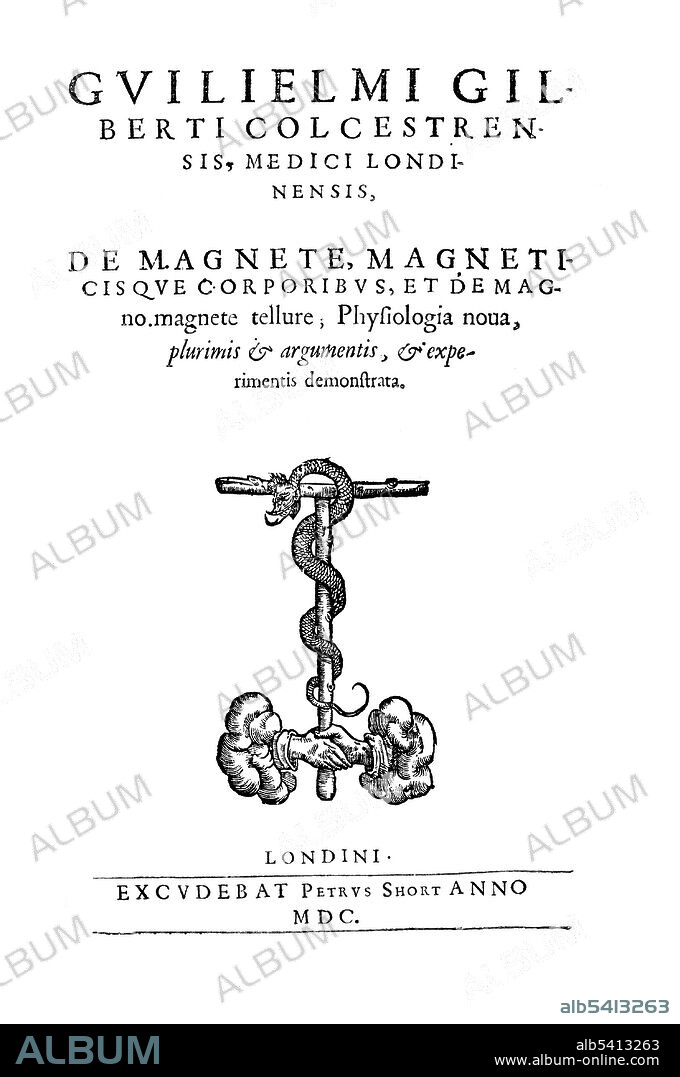alb5413263
William Gilbert, De Magnete, Title Page,1600

|
Add to another lightbox |
|
Add to another lightbox |



Buy this image.
Select the use:

Title:
William Gilbert, De Magnete, Title Page,1600
Caption:
Title page of De Magnete, Magneticisque Corporibus, et de Magno Magnete Tellure (On the Magnet and Magnetic Bodies, and on That Great Magnet the Earth) is a scientific work published in 1600 by William Gilbert. De Magnete was influential because of the inherent interest of its subject matter, but also for the rigorous way in which Gilbert described his experiments and his rejection of ancient theories of magnetism. William Gilbert (May 24, 1544 - November 30, 1603) was an English physician, physicist and natural philosopher. He was the first to argue that the center of the Earth was iron, and he considered an important and related property of magnets was that they can be cut, each forming a new magnet with north and south poles. He invented the first electrical measuring instrument, the electroscope, in the form of a pivoted needle he called the versorium. He died in 1603 at the age of 59. His cause of death is thought to have been the bubonic plague.
Credit:
Album / Science Source / LOC/Rare Book Selections
Releases:
Model: No - Property: No
Rights questions?
Rights questions?
Image size:
2988 x 4500 px | 38.5 MB
Print size:
25.3 x 38.1 cm | 10.0 x 15.0 in (300 dpi)
Keywords:
1600 • 17TH CENTURY • ART • BW • DE MAGNETE • EARTH MAGNETIC FIELD • GEOMAGNETISM • GEOPHYSICS • HISTORY • MAGNETIC DIP • MAGNETIC FIELD • MAGNETIC POLES • MAGNETISM • SCIENCE • TITLE PAGE • WILLIAM GILBERT • WOODBLOCK PRINT • WOODCUT • XYLOGRAPHY
 Pinterest
Pinterest Twitter
Twitter Facebook
Facebook Copy link
Copy link Email
Email
